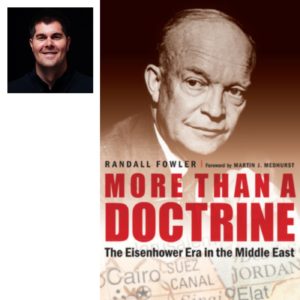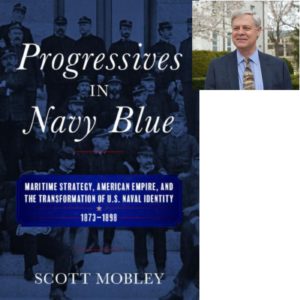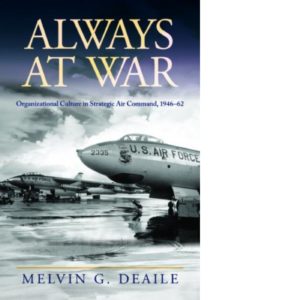Podcast: Play in new window | Download
Subscribe: RSS
 Randall Fowler has studied rhetoric at the graduate level and has written a new book on the Eisenhower Doctrine. I interviewed him about the book.
Randall Fowler has studied rhetoric at the graduate level and has written a new book on the Eisenhower Doctrine. I interviewed him about the book.
1:27 – Randall started in religious history and then spent time teaching in English. There he became more interested in the Middle East and writing history.
2:53 – The book started as a study into the Suez crisis. But then he began to dig into Eisenhower’s feelings about Middle East issues.
3:53 – The book focuses on the rhetoric of the Eisenhower doctrine and what it meant for the Middle East region.
6:59 – Eisenhower had several speechwriters who helped him write 17 drafts of the doctrine and speech.
9:23 – US was most interested in the region for its oil and how that oil supported European security.
12:59 – The Soviet perspective was to resist the US and promote communism in the region.
16:14 – When the Egyptians made a major arms deal with the Soviets, Eisenhower became worried about the inroads they were making in the Middle East. He pushed religion though Arab nationalism at the time was somewhat secular.
19:53 – As a policy, the Eisenhower Doctrine failed. Arabs didn’t support it.
23:38 – Woodrow Wilson is the first President to really talk about the Middle East at all.
28:23 – Iran was the anchor for US defense of the Middle East during the Cold War until 1979. Arabian oil reserves weren’t exploited until the 60s and on and made Arabia more influential.
32:12 – Eisenhower understood that popular opinion mattered. But US maintained influence through the leaders and not so much the people.
39:59 – During this period, the US had nuclear missiles in Turkey which contributed to the Cuban Crisis. Domino theory also made the US worry about the Soviets taking Middle Eastern countries.
45:53 – Eisenhower tried to work to keep the US from having a large standing army. He saw it as wasteful and a threat to democracy.
51:51 – Randall was surprised at the number of foreigners he found in Middle Eastern countries.
For more “Military History Inside Out” please follow me on Facebook at warscholar, on twitter at Warscholar, on youtube at warscholar1945 and on Instagram @crisalvarezswarscholar
Guests: Randall Fowler
Host: Cris Alvarez
Tags: military, history, military history, conflict, war, interview, non-fiction book, Middle east, Saudi Arabia, Iran, Turkey, Egypt, Eisenhower, Suez canal, UK, Soviet Union


 Dr. Mel Deaile attended the US Air Force Academy. He then became a bomber pilot and earned his PhD with the Air Force. He know teaches nuclear deterrence related subjects for the Air Force. He’s written a number of pieces and this is his latest book, Always at War about the Strategic Air Command.
Dr. Mel Deaile attended the US Air Force Academy. He then became a bomber pilot and earned his PhD with the Air Force. He know teaches nuclear deterrence related subjects for the Air Force. He’s written a number of pieces and this is his latest book, Always at War about the Strategic Air Command.